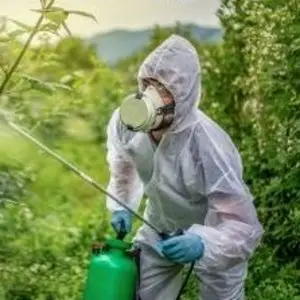Which is better for protecting you from chemicals: a splash overall or a jacket and pants? It’s a tough question, but we’ve got the answer.
What are chemical splash overalls?
Chemical splash overalls are a type of clothing worn to protect the body from coming into contact with harmful chemicals. They are made of a material that is impermeable to chemicals, such as polyethylene or PVC, and are usually brightly colored so that they can be easily seen in an industrial setting. Splash overalls typically cover the entire body, including the head and feet, and have a zip-up or Velcro front for easy donning and doffing.
What are the benefits of chemical splash overalls?
Chemical splash overalls provide the highest level of protection against chemical splashes, compared to jackets and pants. They are made of a thicker material, which makes them more durable and tear-resistant. Overall, they provide better coverage than jackets and pants, and they are less likely to come off in an accident.
What are the drawbacks of chemical splash overalls?
There are some drawbacks to be aware of when it comes to chemical splash overalls. One is that they can be hot and uncomfortable to wear, particularly in the summer months. Another is that they can make it difficult to move around and may limit your range of motion. Additionally, they can be pricey and may not be as durable as other types of protective clothing.
What are jacket and pants?
Jacket and pants are a type of full-body protective clothing that offers enhanced protection against hazardous materials. Unlike traditional coveralls, which are made of a single layer of fabric, jacket and pants feature a two-layer design with an outer layer of resistant material and an inner layer of insulating material.
A chemical splash jacket and pants are two separate garments that cover the upper and lower body, respectively. This combination provides superior protection against a wide range of chemicals, including those that are highly corrosive or highly toxic. Jacket and pants are also often equipped with additional features such as hoods, boots, and gloves to further protect the wearer from exposure to potentially harmful materials.
What are the benefits of jacket and pants?
One of the benefits of a jacket and pants is that they offer more protection than overalls. Overalls cover only your torso and legs, exposing your arms and shoulders. A jacket and pants provide coverage for your entire body, which is important when working with dangerous chemicals.
Another benefit of a jacket and pants is that they are easier to take on and off than overalls. If you need to quickly remove your protective clothing, it’s much easier to do so with a jacket and pants than with overalls. Jacket and pants also allow you to regulate your body temperature more easily than overalls, as you can take off the jacket if you get too warm.
What are the drawbacks of jacket and pants?
One potential drawback of wearing a jacket and pants instead of chemical splash overalls is that they do not provide as much coverage. If you are working with dangerous chemicals, it is important to have clothing that will protect your skin from exposure. Wearing a jacket and pants leaves more skin exposed, which could lead to serious injuries if you are splashed with chemicals.
Another drawback of jacket and pants is that they can be more uncomfortable to wear than overalls. Overall have loose-fitting fabric that allows you to move around more freely, while jackets and pants can be restrictive. This can be an issue if you are working in a hot environment or performing tasks that require a lot of movement.
Finally, jackets and pants can be more expensive than overalls since you need to purchase two separate pieces of clothing. If you are on a budget, purchasing chemical splash overalls may be the more cost-effective option.
Which is better – chemical splash overalls or jacket and pants?
Which is better, splash overalls or jacket and pants depends on personal preferences and several factors. A chemical splash overall is typically more expensive than a jacket and pants. This is because a chemical splash overall is made of more material and requires more stitching than a jacket and pants.
However, chemical splash overalls offer more protection than jacket and pants. This is because a chemical splash overall covers more of the body and is less likely to allow chemicals to come into contact with the skin. Overalls are also easier to don and do not require as much adjustment once they are on. However, overalls can be hot and uncomfortable, and they may not provide the best fit for everyone.
A jacket and pants combination may be a better choice in some situations. For example, if you need to wear a respirator with your protective clothing, a jacket and pants combination will allow you to attach the respirator straps easily. Jacket and pants combinations are also more breathable than overalls, so they may be more comfortable in hot environments.
Some people prefer overalls because they provide better coverage, while others prefer jacket and pants due to comfort. Overall, it is a matter of personal preference.
Conclusion
When selecting protective clothing for chemical hazards, you should consider the type of hazard you are working with, the level of protection you need, your comfort level, and the ease of donning and doffing the clothing.
Chemical splashes can cause serious injuries, so it is important to choose the right type of protective clothing for the job. If you are working with chemicals, always consult your employer or safety manager to ensure you are wearing the correct type of protective clothing.

